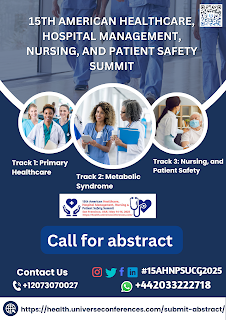How does breast reconstruction work?
The shape of the lost breast can be recreated for many women who undergo a mastectomy, a procedure to remove the entire breast to treat or prevent breast cancer.
There are
various alternatives available to women who decide to have their breasts
rebuilt. With implants, breasts can be reconstructed (saline or silicone).
Autologous tissue can also be used to rebuild them (that is, tissue from
elsewhere in the body). The breast can occasionally be rebuilt using both
implants and autologous tissue.
Breast reconstruction surgery can be performed (or begun) immediately following a mastectomy (known as immediate reconstruction) or after breast cancer treatment is finished and the mastectomy wounds have healed (which is called delayed reconstruction). After a mastectomy, delayed reconstruction may take place months or even years later.
If a nipple
and areola were not preserved following the mastectomy, they might be recreated
as part of the breast reconstruction process.
Surgery on
the opposite breast, or contralateral breast, may be performed in conjunction
with breast reconstruction surgery to ensure that the two breasts are the same
size and shape.
How do doctors restore a woman's
breast with implants?
After the mastectomy, implants are placed beneath the skin or the chest muscle. (The majority of mastectomy procedures are carried out using a technique termed skin-sparing mastectomy, in which a significant portion of the breast skin is preserved for use in breast reconstruction.)
Implants are
usually placed as part of a two-stage procedure.
The expander
is taken out and replaced with an implant in the second stage after the chest
tissue has relaxed and healed sufficiently. After a mastectomy, the chest
tissue is typically prepared for the implant 2 to 6 months later.
In rare
circumstances, the implant can be inserted into the breast alongside a
mastectomy, so that a tissue expander is not necessary to prepare the area for
the implant.
Acellular
dermal matrix is a substance that surgeons are increasingly using as a scaffold
or "sling" to support implants and tissue expanders. Acellular dermal
matrix is a type of mesh created from donated skin from pigs or humans that have
been sterilized and processed to remove all cells in order to reduce the risk
of infection and rejection.
Will breast reconstruction be covered
by health insurance?
According to
the Women's Health and Cancer Rights Act of 1998 (WHCRA), group health plans
and health insurance providers who cover mastectomy procedures must also cover
reconstructive surgery after the procedure. This coverage must cover all phases
of breast symmetry surgery, breast prosthesis, and the management of
post-mastectomy problems like lymphedema. It also needs to cover all stages of
reconstruction and reconstruction surgery. The Department of Labor and the
Centers for Medicare & Medicaid Services both have more details on the WHCRA.
Some government
health plans and health plans supported by religious organizations can be
exempt from the WHCRA. Also, Medicare and Medicaid are not covered by the
WHCRA. After a mastectomy, Medicare may, however, pay for breast reconstruction
surgery as well as external breast prostheses (such as a post-operative bra). For
information on whether and how much breast reconstruction is covered by
Medicaid, a woman should get in touch with her state's Medicaid office. Before
deciding to have breast reconstruction surgery, a woman may wish to talk to her
doctor and insurance provider about expenses and health insurance coverage. A
second opinion may be required by some insurance providers before they will
agree to cover a procedure.
Contact Us:-
Reach out to us: https://breastcancerpathology.universeconferences.com/
Mail:
pathology@universeconferences.com| info@utilitarianconferences.com | breastcancer@ucgconferences.com
Whatsapp: +442033222718 Call: +12073070027
Previous
Blog Post Links:-
· https://kikoxp.com/posts/11632
· https://www.blogger.com/blog/post/edit/3238443600245550728/7246086302346767315
· 10th World Breast Pathology and Breast Cancer Conference |
LinkedIn
· https://wordpress.com/post/breastpath2022.wordpress.com/6
· https://medium.com/@elizaedwards2021/breast-cancer-disease-f0324f19b8a2
· https://www.blogger.com/blog/posts/3238443600245550728
· https://www.reddit.com/user/breastcancerucg1/comments/th0lj8/breast_cancer_disease/
· https://www.blogger.com/blog/post/edit/3238443600245550728/5272365125212681129
· https://kikoxp.com/posts/10351
https://www.tumblr.com/dashboard
https://medium.com/@Andreaross01/breast-cancer-in-men-326a71409c5
https://www.linkedin.com/pulse/breast-cancer-men-dr-priya-pujhari
https://www.linkedin.com/pulse/breast-cancer-symptoms-causes-dr-priya-pujhari
https://www.blogger.com/blog/posts/7151158548968050254
.png)


Comments
Post a Comment